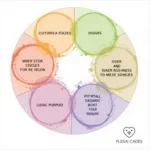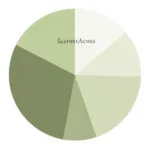Food coloring: the vibrant hues that transform plain cakes into masterpieces and make breakfast cereals a visual treat. But as parents, it’s natural to question whether these artificial dyes are safe for our little ones, especially babies with their developing systems.
Understanding Food Coloring
Before delving into safety concerns, let’s understand what food coloring actually is. These concentrated dyes, often synthetically produced, are designed to enhance the visual appeal of food. They come in various forms like liquids, gels, powders, and pastes.
Food Coloring and Babies: What’s the Concern?
While food coloring might seem harmless, several concerns have been raised regarding its impact on babies:
- Developing Digestive Systems: Babies have immature digestive tracts, making them potentially more sensitive to additives like food coloring.
- Allergic Reactions: While rare, food dyes can trigger allergic reactions in some infants, manifesting as skin rashes, hives, or digestive issues.
- Behavioral Effects: Some studies suggest a possible link between artificial food colors and hyperactivity in children, although more research is needed to confirm these findings.
Is Natural Food Coloring a Safer Alternative?
With growing concerns about artificial dyes, many parents are turning to natural food coloring derived from fruits, vegetables, and spices. These options might seem like a healthier choice, but it’s essential to consider:
- Potency: Natural food coloring is generally less potent, resulting in paler shades that might not be as visually appealing.
- Taste Impact: Natural dyes can impart subtle flavors to food, which might not be desirable in all cases.
- Availability: Finding a wide range of natural food coloring options can be challenging.
Tips for Minimizing Exposure to Food Coloring
While completely avoiding food dyes might be impractical, here are some ways to minimize your baby’s exposure:
- Read Labels Carefully: Always check ingredient lists for terms like “artificial color,” “FD&C,” or specific color names (e.g., Yellow 5, Red 40).
- Choose Whole Foods: Opt for fresh fruits, vegetables, and homemade meals whenever possible, as these are less likely to contain artificial colors.
- Limit Processed Foods: Reduce your baby’s intake of processed snacks, cereals, and drinks that often contain high amounts of food coloring.
When in Doubt, Consult Your Pediatrician
Every baby is different, and what works for one might not work for another. If you have any concerns about food coloring and your baby’s health, it’s always best to consult your pediatrician. They can provide personalized advice based on your baby’s individual needs and medical history.
Conclusion
While the use of food coloring in baby food is a topic of ongoing debate, being informed and making conscious choices is key to ensuring your little one’s well-being. By understanding the potential risks, exploring alternatives, and seeking professional guidance when needed, you can navigate the world of food coloring confidently and provide your baby with a safe and healthy start in life.
FAQs
1. Can food coloring cause ADHD in babies?
While some studies have suggested a possible link between artificial food colors and hyperactivity in children, more research is needed to establish a definitive causal relationship.
2. What are some natural food coloring alternatives?
Natural food coloring can be derived from sources like beetroot powder (pink/red), turmeric (yellow), spinach (green), and blueberry juice (blue/purple).
3. At what age is it safe to introduce food coloring to babies?
It’s generally advisable to avoid or minimize artificial food coloring for babies, especially during the first year when their digestive systems are still developing.
Do you have other questions about how to make vibrant and safe sensory experiences for your baby? Learn more about how to make colored rice for sensory bin or how to color rice for sensory bin.
For further information about child development and sensory play, check out our article on what age do kids know colors.
Need personalized advice on creating a colorful and safe environment for your little one? Contact us at Color Box Hanoi:
Phone: 0373298888
Email: [email protected]
Address: 86 Cầu Giấy, Hà Nội
Our dedicated customer support team is available 24/7 to assist you.

